4.48pm That’s all for now
Thanks for joining us, I think we can all agree that today was another great day to showcase chemistry to the world. You can find all our coverage of the chemistry Nobel prize today here. Next week we’ll be bringing you the full story of the people behind the chemistry prize and how the discoveries that they made have changed our world. With that I’ll leave you with Moungi Bawendi celebrating at MIT.
Congrats Moungi! I know the the #NobelPrize doesn’t factor in teaching and mentorship, but he is someone that does it all. So many of us have benefited from his thoughtful skepticism, creative problem solving, and guidance throughout the years. Cheers! pic.twitter.com/9BPJlhl9x7
— Dane deQuilettes (@DanedeQuilettes) October 4, 2023
4.41pm Who worked with whom?
Below is a network plot that shows all the researchers (above a threshold) that Moungi Bawendi has worked with over the years, and how these collaborators connect with other scientists.
And here’s the network plot of collaborations of Louis Brus. His connections to Bawendi can be seen in the bottom right in olive green – Bawendi was mentored by Brus so seeing that they still work together isn’t that surprising.
3.58pm You have questions, we have answers
Do you want to know exactly what quantum dots are? Are all nanoparticles quantum dots or all quantum dots nanoparticles? Or why they won the chemistry Nobel prize? And what was going on with that apparently unprecedented leak of the winners a few hours before the announcement? We’ve got all the answers you could need about today’s chemistry prize.
3.11pm The rise of quantum dots
The 1993 paper by Moungi Bawendi wasn’t when quantum dots were first synthesised – you’d need to go back to the early 80s and Alexi Ekimov’s pioneering papers – but it was when it started looking like it might be possible to mass produce them. And not only mass produce them, but manufacture uniform, almost identical quantum dots. This opened up the possibility of using them in a range of applications where the fact that they’re chemically identical but physically slightly different sizes could be made use of – in biological imaging, TVs and LEDs. The graph below charts the rise of quantum dots following Bawendi’s seminal paper.
2.57pm Colourful quantum dots
There can be few Nobel prizes that have lent themselves to displays of vibrant colours. Social media is awash with people celebrating the chemistry prize for quantum dots with some very loud pictures!
Of course we need to celebrate with #glowythings 😍🎉 https://t.co/qjqxdZWaeL pic.twitter.com/UUfLLXdOOI
— Nienhaus Lab (@NienhausFSU) October 4, 2023
Pr Moungi Bawendi, MIT, is the first Tunisian-origin winning a Nobel Prize (quantum dots discovery, chemistry) . Warm Congratulations ! 🇹🇳 https://t.co/1qLQJRCfXO pic.twitter.com/mutKN1sPBN
— NAIT MOHAMED Faez A., P.h.D (@faeznm) October 4, 2023
So this year's chemistry Nobel Prize is for quantum dots (QD)🌈
— Anastasia Klimash 🇺🇦 (@nastasiaKlimash) October 4, 2023
The cool thing is that you can have all this rainbow of colours from QD of the same material; the only difference is the size of the particles it's assembled in. Violet to red = smaller to bigger. pic.twitter.com/vPAXoityBb
2.21pm Ouch that could be expensive!
Paying 149-1. Please bring your tickets to the cashier. https://t.co/nve2x8lA3n
— ChemBark (@ChemBark) October 4, 2023
2.12pm Just joining us?
If you’re just waking up then the big chemistry news this morning is that quantum dots have won the chemistry Nobel prize, and the Swedish Royal Academy accidentally leaked the winners two hours in advance. Want to catch up – here’s our story. Stay with us for a little longer this afternoon as we provide more reaction to today’s events. All our Nobel content can be found on this page as well.
2.09pm Anyone remember having to go to the library to photocopy papers?
This photocopying story has some Nobel prize pedigree. Quite a trek that, too – 11 hours by train! The 1993 Bawendi paper in question if anyone wants it (still behind a paywall though so photocopier may still be needed). Viewed 57,000 times and cited over 7600 times. Quite a popular paper.
In 2001, as a bachelor student working on aqueous thiol-capped CdTe QDs in Ukraine (Chernivtsi), I had no access to the 1993 JACS paper of Bawendi et al. I had to travel to Kyiv to the library of the Kyiv National University to make a copy with Xerox-machine. Then many other… https://t.co/MAed2qDW7i
— Maksym Kovalenko (@mvkovalenko) October 4, 2023
1.15pm The pedigree of the new chemistry laureates
If we look at the academic family tree of some of the new laureates, we can see that they have some illustrious forebears. Louis Brus’s ‘grandfathers’ – the supervisors of his supervisors are Willis Lamb who won the 1955 physics Nobel and John van Vleck, who won the 1977 physics Nobel for his work on magnetism. From there it only gets more impressive with Robert Oppenheimer as his great-grandfather, and among his great-great-grandfathers Wolfgang Pauli, Max Born, JJ Thomson and Patrick Blackett – all physics laureates.
Moungi Bawendi can count one Nobel laureate among his ‘parents’ – Louis Brus! Through Brus he is obviously connected to Lamb, van Vleck and, further back, Oppenheimer. Through another branch of his academic family tree Bawendi is connected to his great-grandfather Julian Schwinger, who shared the 1965 physics prize for quantum electrodynamics with Richard Feynman and Shin’ichirō Tomonaga. Other great-grandparents with Nobels include Charles Townes and Max Born. At the great-great-grandparent level he is a ‘descendant’ of Isidor Rabi, Wilhelm Wien and JJ Thomson – all physics laureates. Hold on, has the chemistry prize gone to the physicists this year?!
However, Alexei Ekimov’s academic family tree is currently bare with no connections yet…
12.53pm Comments coming in
We’re getting some reaction from people in the chemistry community about the winners now.
Professor Gill Reid, president of the Royal Society of Chemistry said:
“The recognition of this work on quantum dots is really exciting and shows how chemistry can be used to solve a range of challenges. These remarkable nanoparticles have huge potential to create smaller, faster, smarter devices, increasing the efficiency of solar panels and the brilliance of your TV screen. I add my congratulations to Moungi Bawendi, Louis Brus and Alexei Ekimov.
“Chemistry is often called the central science – it’s the driving force behind so many of the discoveries previous Nobel Prizes have recognised. Things we use every day and which will make our lives better in the future, from the battery in the mobile phone in your pocket to the ability to edit the human genome to prevent and cure disease.
“Great science benefits from diverse viewpoints as part of a collective endeavour, and this year’s prize is a great example of that – people working in different labs, in different countries, approaching a problem from different angles. We don’t work in isolation in chemistry – teamwork is both a fundamentally important aspect of how science is actually done, and one of the most fun!”
David Lewis from Manchester University says:
“I very much welcome the 2023 Nobel Prize in Chemistry awarded to Moungi G. Bawendi, Louis E. Brus and Alexei I. Ekimov for the discovery and synthesis of quantum dots.It should be noted that before the advent of semiconducting quantum dots in order to assemble functional optoelectronic devices one had to select multiple semiconducting materials that would have differing band gap energies to obtain the performance required. This could be rather tricky given that, in general, chemically distinct materials have differing crystal and electronic structures and often this meant circumventing these sometimes rather recalcitrant material incompatibilities at interfaces.
The real game changing aspect that quantum dots brought to the table was that by changing the length scale of a single material one could now modulate and control electronic structure and thus band gap energy in a predictable way, and a step change in the engineering of optoelectronic devices was realised, reducing these material incompatibility problems and expanding the palette of technologies possible. Quantum dots now find widespread use in TVs in homes due to the pure emission colours they produce, and in future will play a key role at the forefront of quantum 2.0 research.”
Andrey Rogach, from Hong Kong City University, said:
“Semiconductor quantum dots, which can most conveniently be synthesized as light emitting colloidal nanoparticles in solution, have for quite some time appeared in textbooks as a colorful illustration of the ‘quantum confinement effect’. They are already used as light emitting materials for biolabelling applications and, very prominently, in LEDs and TV displays, as well as light absorbers in solar cells and photodetectors. It is great news for all the colleagues to receive recognition of quantum dots with the Nobel Prize in Chemistry 2023. Heartful congratulations to Moungi, Louis and Alexei, representing the pioneers of this field!”
12.28pm Who are the winners and why did quantum dots win?
Our news story explains what a quantum dot is and looks at the pioneering work conducted by the three winning chemists on quantum dots as far back as the early 1980s. We also cover what on earth happened with that leak of the chemistry Nobel winners two hours before the announcement was made.
11.33am A bit of a surprise award this one
There hasn’t been a great deal of buzz around quantum dots when it came to the chemistry Nobel prize. As we always say, the Nobel prize committee is quite conservative and tend not to reward the latest flash in the pan research, preferring to wait and see whether the discovery stands the test of time. Quantum dots certainly fall into this category with the early work being done in the early 1980s by Alexei Ekimov. The other pioneering work came a little later with Moungi Bawendi creating a production process that could be used to manufacture highly uniform dots in the 1990s, meaning that industry could take it forward. From there they found their way into TVs, computer screens and solar cells – a discovery that really was of the ‘greatest benefit’ to humankind, as the Nobel Foundation’s tagline goes. Well done to Paul Bracher who had Ekimov and Brus on his list as an outside chance of a prize at 149–1.
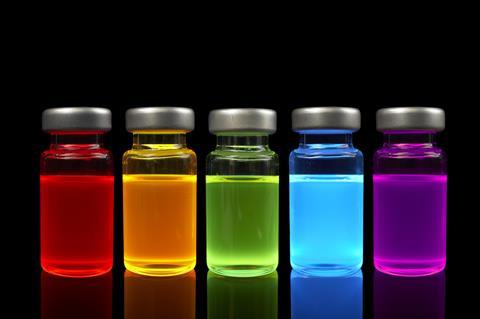
11.14am How did the leak happen?
The Nobel committee, when asked about the leak, described it as unfortunate and that it would be investigating it further. The important thing, they added, was the prize awarding was not disrupted.
11.06am Bold new quantum world
What are quantum dots? We’ve got an explainer to cover that. They’re nanoscale particles of semiconductors – one of the most well-known materials used to produce them is cadmium selenide. (We’ll be bringing you an explainer on what quantum dots are all about later today.) If you’ve ever seen quantum dots they’re extremely colourful – explaining why they’ve been of interest to scientists because they can photoluminesce after they are excited. This property has been harnessed in high resolution computer screens and TVs. The Nobel committee note that ’In the early 1980s, Alexei Ekimov succeeded in creating size-dependent quantum effects in coloured glass. The colour came from nanoparticles of copper chloride and Ekimov demonstrated that the particle size affected the colour of the glass via quantum effects.
A few years later, Louis Brus was the first scientist in the world to prove size-dependent quantum effects in particles floating freely in a fluid.
In 1993, Moungi Bawendi revolutionised the chemical production of quantum dots, resulting in almost perfect particles. This high quality was necessary for them to be utilised in applications.’

10.49am Remarkable! It is quantum dots. Congratulations to the winners
The Royal Swedish Academy of Sciences has decided to award the 2023 #NobelPrize in Chemistry to Moungi G. Bawendi, Louis E. Brus and Alexei I. Ekimov “for the discovery and synthesis of quantum dots.” So the leak is confirmed – a real scoop for Swedish newspaper Aftonbladet. What an unfortunate cock up for the Nobel Foundation releasing the information early.
BREAKING NEWS
— The Nobel Prize (@NobelPrize) October 4, 2023
The Royal Swedish Academy of Sciences has decided to award the 2023 #NobelPrize in Chemistry to Moungi G. Bawendi, Louis E. Brus and Alexei I. Ekimov “for the discovery and synthesis of quantum dots.” pic.twitter.com/qJCXc72Dj8
Here we go!
10.43am The generosity of Nobel laureates
One of this year’s winners of the physics Nobel prize has donated his share of the prize money to an education charity that is carrying out work in Ukraine. He’s not the first to donate his winnings. Many other laureates have followed in his footsteps and the 2021 chemistry laureate Dave MacMillan gave his money away to a charitable foundation.
Nobel prize winner donates prize money to #Ukraine
— Krus & Stern (@krus_stern) October 3, 2023
This year's #NobelPrize in Physics winner, @MPI_Quantum Director Krausz, has announced to @Dlf_Forschung that he will donate the prize money to #Science4People. The association renovates e.g. schools in Ukraine.#StandWithUkraine pic.twitter.com/7TBPqmJCHN
10.34am The live feed from the Nobel Foundation is up and running
Ten minutes to go. Have they made a decision? I hope so!
The members of The Royal Swedish Academy of Sciences gathered once again in this room, this time to decide on the Nobel Prize in Chemistry 2023.
— The Royal Swedish Academy of Sciences (@ScienceAcad_swe) October 4, 2023
Watch the live stream from the press conference at 11:45 CEST on https://t.co/nJ1StH9KDk #NobelPrize #NobelPrize2023 #Chemistry pic.twitter.com/r76145eGBN
10.31am Sharpless interview
This interview with last year’s chemistry laureate Barry Sharpless is fascinating. You can learn how Sharpless’s adviser taught him to ‘think like a molecule’ while he was still a young graduate student. He’s also donating an object to the Nobel Prize Museum – a large copper ball that he was given at a mine in the Andes, Chile. A symbol of the importance of copper to his (second) Nobel prize-winning work.
10.27am What’s it worth?
The value of the cash prize that comes with the Nobel has varied a lot over the past 122 years. In 1901 the prize amount was 150,782 Swedish krone (SEK), equivalent to over 8 million SEK (£600,000) in today’s money.
The historical numbers show that the nominal prize amount was not increased during the first and second world wars which meant the overall value as a percentage of the original amount dropped dramatically because of inflation to 28% and 29%, respectively.
In the 1980s and 1990s the nominal prize amount was increased quite rapidly from 8.8 million SEK in 1980 (34% of the value of 1901 prize amount), to 9 million in 2000 (132% of the value of the 1901 prize amount).
This year the prize amount will be increased again by 1 million SEK to 11 million SEK (£800,000) per prize.
10.19am Rare footage from the archive
Just under half an hour to go now until chemistry’s biggest prize is announced (unless the leak was actually correct and we already know this year’s winners). While we wait here’s some rare footage of Dorothy Crowfoot Hodgkin – here she is receiving the 1964 chemistry Nobel for her work on crystallography. Footage of the Nobel prize winners from this era is usually fairly hard to find, presumably as there was less media interest then than there is today.
See the very moment chemistry laureate Dorothy Crowfoot Hodgkin receives her #NobelPrize on 10 December 1964.
— The Nobel Prize (@NobelPrize) January 25, 2023
Crowfoot Hodgkin was the third woman to be awarded the chemistry prize, following in the footsteps of Marie Skłodowska Curie and her daughter Irène Joliot-Curie. pic.twitter.com/xVz65AG2Zh
10.14am Bringing you reactions to who won and why later this week
We’ll be a hosting a free webinar at 1500 BST (1600 UTC) on Friday 6 October taking in reactions from around the world to the awarding of the chemistry Nobel prize. Join us and special guests as we talk about who won, why and what it means for chemistry. Whether you’re delighted or disappointed, we’d love you to join us and share your thoughts on the announcement.
10.09am Believe in your dream
Katalin Káriko, the newest medicine laureate, faced many setbacks when it came to her work on mRNA vaccines. She had a cancer scare and had to take demotion at the University of Pennsylvania just to keep a job there. But she never lost her self-belief or belief in mRNA vaccine technology as this anecdote reveals.
Our latest Nobel winner knew how to leave a room. Congratulations to Kati Kariko. https://t.co/DLZNlDaWqU pic.twitter.com/gUwmLdEVbB
— mattie kahn (@mattiekahn) October 2, 2023
9.58am Finally! I’ve won – you love me, you really love me!
Spare a thought for those poor top scientists who have conducted research that they’re certain is worthy of a Nobel prize, but are still waiting for the call from Sweden. Every year that October comes around and they’re on tenterhooks praying for the phone to ring. Well, one study has found that the longer a Nobel laureate has to wait for their prize the more emotional they are during their Nobel prize banquet speech in December. The team from Brisbane in Australia concluded that there was ‘a robust positive correlation between waiting time and positive emotions’ during the new laureate’s speech.
The Nobel prizes provide a rich seam of data to mine, so it’s unsurprising that we see regular studies on laureates. Another one came out this year – winning a Nobel prize (at least in medicine) could be bad for your productivity. The team at the US National Bureau of Economic Research compared productivity pre-award and post-award. They discovered that future laureates’ publications were bigger, more highly cited and more novel before they won the medicine Nobel than after. This didn’t seem to be true for winners of the Lasker prize though, another hugely prestigious medicine prize. Perhaps all those invitations to give valedictory lectures and the like simply takes winners away from their work.
9.55am Breaking bad the Nobel prize version
This is an unusual one – presumably the nomination is also for innovative scale-up of N,α-dimethylphenethylamine under particularly challenging conditions!
BREAKING NEWS
— The Journal of Immaterial Science (@JImmatSci) October 4, 2023
The 2023 #NobelPrize in Chemistry has been awarded to Walter White for promoting an understanding of synthetic organic chemistry to the general public. This unprecedented selection is bound to spark controversy, but Walter is/was an undeniably inspiring figure... pic.twitter.com/v7MXCOxBsr
9.50am A leak from the Nobel committee? That would be a first
Well, well, well. This would be a first to my knowledge. A Swedish newspaper is claiming that the winners of the chemistry prize were accidentally released to them in advance of the announcement, which is still an hour away. The newspaper claims that the new laureates will be Moungi G. Bawendi, Louis E. Brus and Alexei I. Ekimov for their work on quantum dots. The identities of the winners of Nobel prizes are a closely guarded secret and the paper is claiming that it was accidentally sent out to them in advance of the announcement. Quantum dots are nanosize semiconductor particles. They have been formulated into a number of devices such as solar cells and light emitting diodes so they could be worthy of the Nobel nod. However, Johan Aqvist, chair of the academy’s Nobel committee for chemistry, told Reuters: “It is a mistake by the Royal Swedish Academy of Sciences. Our meeting starts at 0930 CET (0730 GMT) so no decision has been made yet. The winners have not been selected.” Is this just a hoax?
9.39am Keep it in the family
This year we’ve also been diving into the academic family tree website – it’s an effort to build an authoritative genealogy of as many of the world’s scientists as possible. The site maps the advisers of a scientist when they were doing their PhD – their ‘parents’ – and also the graduate students they mentor – their ‘children’. We’ve been delving into the history of some of the recent winners of chemistry prizes as a bit of fun to see if Nobel laureates go on to have Nobel-prize winning ‘children’.
Starting with last year’s winners we can see it should come as no surprise that Barry Sharpless, as that rarest of beasts, a double chemistry Nobel prize winner, has an excellent Nobel pedigree. His academic ‘father’ was Konrad Bloch, a biochemist who won the 1964 chemistry prize for his work on cholesterol and fatty acid metabolism. Among his great-grandparents he counts (Hermann) Emil Fischer, who won the second ever chemistry Nobel in 1902 for his work sugar and purine synthesis. Even further back August Kekulé of benzene snake dream fame is Sharpless’s great-great-grandfather. (Of course, the further you go back its more and more likely that a chemist will be ‘related’ to some of the pivotal figures in the history of chemistry.)
Carolyn Bertozzi won the chemistry Nobel prize in 2022 for her work on biorthogonal chemistry – bringing synthetic chemistry into cells. Among her great-grandfathers she can count Marshall Nirenberg, who won the medicine Nobel in 1968 for his work on unravelling the genetic code. Through her former supervisor Mark Bednarski she can also count Robert Burns Woodward as her great-great-grandfather. Woodward, of course, won the chemistry prize in 1965 for his pioneering work in organic synthesis. Through another of her supervisors, Joseph Grabowski, she is connected to Donald Cram, who won the chemistry prize in 1987 for his work on structure-specific interactions.
Morten Meldel, who won a third of this prize, by contrast has no Nobel ancestors (although the data in his lineage appears a bit sparse). A big part of this could be that he’s not plugged into the US network of top universities where many of the Nobel prizes have gone post war that Bertozzi and Sharpless are.
Another interesting pick from recent years is 2014 chemistry laureate William Moerner. He has two Nobel-prize winning great grandfathers – the wonderfully named Polykarp Kusch and Isidore Rabi. Kusch won the physics Nobel in 1955 for his contribution to determining the magnetic moment of the electron, while Rabi won the 1944 physics Nobel for his work on recording the magnetic properties of atomic nuclei. Moerner also has two physics laureate great-great-grandfathers through the line of James Gegen Miller. Niels Bohr, who won the physics prize in 1922 for work on the structure of the atom, and Otto Stern, who won the 1943 prize for the discovery of the magnetic moment of the proton.
At the great-great-great-grandparent level the lineage starts getting more crowded as the links get ever more tenuous. Moerner can count six Nobelists here – James Franck, Erwin Schrodinger, JJ Thomson, Ernest Rutherford, Max Born and Albert Einstein in his extended academic family tree! What an amazing lineage.
Dave MacMillan, one of 2021’s winners for his work on organocatalysis, can count two great-grandfather laureates in his academic lineage. MacMillan is linked to Alexander Todd, the 1957 chemistry winner for his work on nucleotides and related coenzymes, through Ronald Breslow and Larry Overman. As a top organic chemist working in the US, it’s not entirely unexpected to discover that MacMillan is linked to synthetic legend Robert Burns Woodward, the 1965 chemistry laureate. MacMillan is linked to Woodward through the same branch as Todd. MacMillan is also notable for his incredible number of ‘children’ – 67 in all – and an amazing 121 ‘grandchildren’!
Have a play, it’s fascinating!
9.28am Parental supervision
We took a look at the occupations of Nobel Prize winners since 1901 to get an insight into their backgrounds and find out if they were potentially inspired by what their parents did for a living.
Interestingly, a significant proportion of the parents of laureates did work in science, technology, engineering or mathematics (Stem); with 33 fathers and 6 mothers working within Stem. However, the majority of the parents of laureates worked across a wide range of different fields.
Many fathers were businessmen and owned their own businesses while several others worked in education as schoolteachers or university professors, or as healthcare professionals. Although information was more difficult to find on the occupations of laureate mothers, we did find that many of them also worked in education or had an important role as a homemaker.
Of course, Irène Joliot-Curie is particularly unique in being the only laureate that had two Nobel Prize-winning parents: Pierre and Marie Curie. However, 2006 prize-winner Roger Kornberg’s father was awarded the Nobel prize in physiology or medicine in 1959.
9.22am Bingo!
We’ve become seasoned Nobel prize watchers over the years at Chemistry World. Consequently, we’ve noticed that quite a few themes and phrases repeat. For a bit of fun this year we’ve put together a bingo card of many of them that come up again and again. You can find the interactive version here.
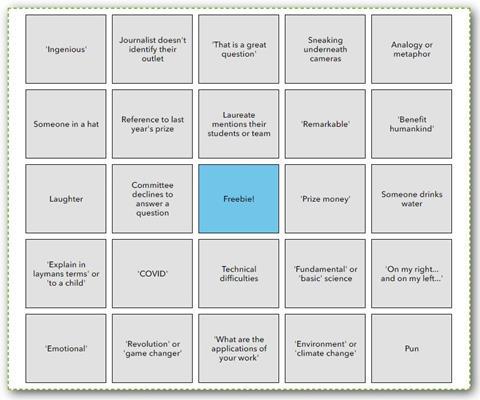
9.15am Women in chemistry
It’s a perennial issue every year the Nobel prizes come around. Should there be more female winners? This year two out of five in the sciences are women, so we’re doing better than most years (last year was one out of seven). As you can see the numbers of female winners across the sciences are still low, even if you only look at the last 20 years or so.
The debate about the obstacles women face in science rumbled on at this year’s Lindau Meeting in Germany, which brings together the world’s Nobel laureates. 2002 chemistry Nobel laureate Kurt Wüthrich chose to use a seminar on structural biology to claim that he’d been discriminated against at the meeting because he was a man. This was robustly challenged by a female scientist, who pointed out that, while men might face individual instances of discrimination, this was not comparable to the systemic and structural discrimination that women face across the sciences. The moderators were clearly caught off guard and tried to move the symposium back to the topic for discussion but Wüthrich’s intervention obviously embarrassed the conference organisers. A week later Lindau’s board put out a statement saying that scientific sessions shouldn’t be used to air grievances and suggested ways that the next meeting might be improved.
9.07am Making the news can be a shock
Normally you can expect a call from the Nobel Foundation to let you know you’ve won one of science’s biggest prizes. But even in this day and age they can’t always track you down before you see it on your newsfeed! Here, Pierre Agostini, one of the new physics laureates, tells us he had to check with his daughter that he really had won the physics Nobel.
“My daughter called me asking, ‘Is that true, I see it on Google?’”
— The Nobel Prize (@NobelPrize) October 3, 2023
That was how Pierre Agostini found out he had been awarded the 2023 Nobel Prize in Physics.
Listen in on a conversation with our new physics laureate: pic.twitter.com/7cdkU3NrDd
9.02am A big hand for Anne
We mentioned earlier that Anne L’Huillier from Lund University in Sweden won the physics Nobel prize this year (one of just five women to have done so). She told the Nobel committee yesterday that she ignored the call from Sweden three times (when you’re in Sweden already a call from there doesn’t seem so out of the ordinary!) as she was teaching. Here she is cornered in her office by students and researchers eager to congratulate her on winning the physics Nobel prize for her work generating attosecond light pulses to probe what exactly electrons get up to inside atoms and molecules.
A round of applause!
— The Nobel Prize (@NobelPrize) October 3, 2023
Students and colleagues at @lunduniversity came together to recognise newly named physics laureate Anne L’Huillier.
Drop a 👏 in the comments to congratulate our new Nobel Prize laureate.
Video credit: Nina Ransmyr, Lund University pic.twitter.com/ZMhY9HzLfj
8.58am Silly season
As always, it’s the Ig Nobels – the Nobels’ quirky relation – that herald the start of Nobel prize season. This year the chemistry prize (shared with geology) got top billing, with the prize being scooped for research on why scientists have historically been keen to lick rocks. It’s not so much because they taste good, but what their taste can tell scientists.
8.50am What will the next Nobel prize winner look like?
When we asked an AI to answer this question, this is what it came up with. The picture is another salutary lesson that AIs simply turn out results based on the data set they’ve been fed, and in this case it appears to have merged Alfred Nobel with some of the other Nobel laureates. Consequently, no pictures of women – despite two winning the medicine and physics prize this year. Data sets can be biased.
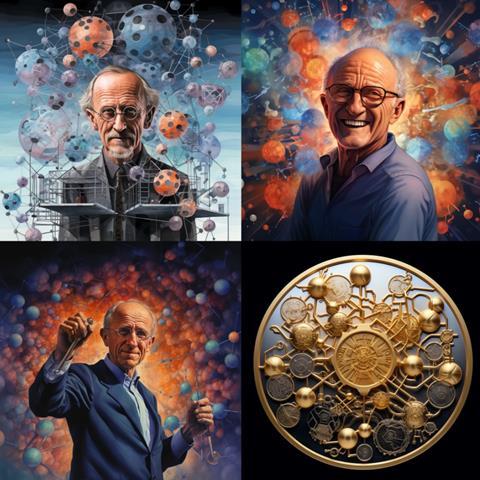
Previously,we crunched the data on who the average chemistry Nobel laureate a few years ago. We came up with an American man who’s 57 or 58 years old, probably called Richard, John or Paul. He works at an institution in California (University of California, Stanford or Caltech) and his prize-winning work was published 16 or 17 years ago, in Nature or JACS.
8.43am Puzzling
While you wait we’ve got a special Nobel-prize themed quick crossword. And if you’re looking for another quick diversion with fewer anagrams then the Nobel Foundation has put a quiz up on six chemistry laureates. Can you match them to their discoveries?
8.40am Do other chemistry prizes predict the Nobels?
This year we’ve done a bit of data crunching to see whether winning other top prizes is a good predictor of whether a Nobel prize is in a researcher’s future. The answer sounds obvious but the data is a little more surprising than you’d think.
8.30am Predictions are hard, especially about the future
Every year there’s plenty of buzz around who might win and no shortage of people prepared to put their reputations on the line to make an educated guess at who might take win chemistry’s top prize. This year the annual poll run by Nature’s Stuart Cantrill saw almost half of the 2500 people that voted pick mRNA vaccines. While they were right that the work was deserving of a Nobel prize, it received the medicine prize leaving the chemistry field wide open. Second place (just) was metal–organic frameworks, another favourite. It should be noted that there’s clearly something in the wisdom of the crowd – at least when it comes to Cantrill’s followers. Those that voted in the poll last year did pick the correct topic – click/bioorthogonal chemistry. They also picked the winning topic in 2020 and 2019 – Crispr and lithium-ion batteries, respectively. (If you recognise that quote about predictions being hard, you might be interested to know that it was apparently first put in writing by a Danish politician in 1948).
3 weeks today (Oct 4th), the 2023 #chemnobel will be announced, so it's time for my annual #ChemTwitter poll! What topic do you think *will* (not should) claim the prize? (Leave comments suggesting what might win if none of the options in the poll...). RTs appreciated!
— Stuart Cantrill (@stuartcantrill) September 13, 2023
If the wisdom of the crowd isn’t your thing and you prefer a more analytical approach then look no further than Clarivate’s citation-crunching. Experts at Clarivate’s Institute for Scientific Information identify those in the top 0.01% for citations in each field the Nobel prize is awarded and then select researchers as their yearly citation laureates. This year for the chemistry prize the bioengineer James Collins, from the Massachusetts Institute of Technology (MIT), US, biologist Michael Elowitz from Caltech, US, and theoretical and experimental biologist and physicist Stanislas Leibler, at Princeton, US, were tipped for their work that established the field of synthetic biology. This field applies engineering principles to the field of biology. Other citation laureates include Shankar Balasubramanian and David Klenerman at the University of Cambridge for their work on next-generation DNA sequencing that has led to the cost of sequencing a person’s genome falling to just a few hundred pounds. The final picks from the ISI were the University of Tokyo’s Kazunori Kataoka, Northeastern University’s Vladimir Torchilin and Karen Wooley at Texas A&M University. They were picked for developing innovative drug and gene targeting and delivery methods.
Paul Bracher at Saint Louis University has also (re)released his odds for this year’s winner…
No time to update, so I’m sticking with last year’s Nobel🏅odds. Just ignore the winners ☺️ and decedents 😔. My personal choice would be for DNA synthesis to finally be recognized. https://t.co/QerOUXn6Th
— ChemBark (@ChemBark) October 2, 2023
8.15am Who’s winning so far?
A quick recap of the Nobel prizes awarded so far. Monday was the turn of the medicine or physiology prize and it went to hot favourites Katalin Karikó and Drew Weissman for their work developing mRNA vaccines that enabled their rapid deployment during the Covid-19 pandemic. It’s not hyperbole to say that mRNA vaccines could change how quickly we can respond to new diseases and how vaccines are developed. The pair has already won the Lasker prize, the Breakthrough Prize in Biology and the Tang Prize so a Nobel wasn’t unexpected after picking up these other top prizes. Weissman and Karikó had also been tipped as potential winners for the chemistry prize but we can scratch them from the list of potential nominees for today’s prize.
Yesterday saw the physics prize awarded to Pierre Agostini, Ferenc Krausz and Anne L’Huillier for their work developing attosecond pulses of light. The Nobel committee provided a helpful analogy to help understand just how brief an attosecond is – ‘an attosecond is to one second as one second is to the age of the universe’. This attosecond work has also been valuable for chemists, as it has helped them probe some of the fastest processes around such as the ejection of an electron from a molecule.
8.10am: Welcome to Chemistry World’s coverage of the Nobel prize in chemistry
Thanks for joining us this morning for the most eagerly anticipated annual event in the chemistry calendar – the Nobel prize in chemistry. We’ll be bringing you all the news and events in the run up to the announcement of the prize at 1145 CEST/UTC (1045 BST) at the earliest and following the awarding of the most prestigious prize in chemistry. We’ll be tweeting from @ChemistryWorld and you can find us on Facebook too. You can also watch the prize announcement made live over on the Nobel Foundation site and we’ll be hosting the video here shortly before the announcement is made. If you’re on Twitter then you’ll want to follow the hashtag #chemnobel and #nobelprize. We hope you’ll stay with us too over the next couple of hours in the run-up to the announcement as we’ll be posting some analysis of the chemistry prize, look at who’s tipped to win and some Nobel trivia. Following the prize announcement, we’ll be running a webinar on Friday afternoon (1500 BST) where we’ll be joined by special guests to talk about the research that took the chemistry prize this year. You can sign up for free.
References
Additional information
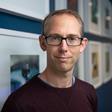



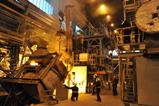


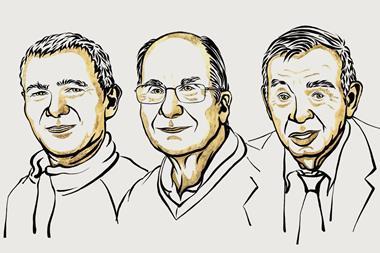
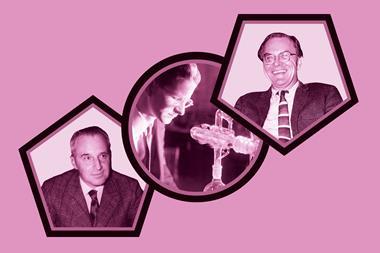

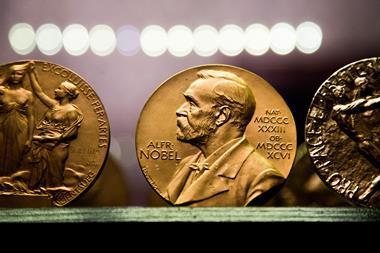






1 Reader's comment